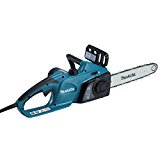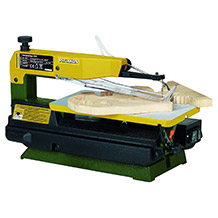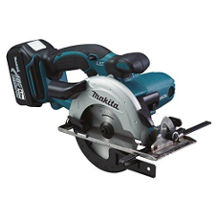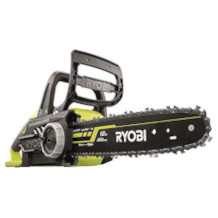Compound miter saw purchasing advice: how to choose the right product
- What you need to know
- Crosscut saws are a special form of circular saws, which are used exclusively for precise shortening of long material.
- Chop saws allow do-it-yourselfers and professionals to make clean, straight cuts with repeatable accuracy.
- The semi-stationary devices are comprehensively adjustable.
- Thanks to numerous protective measures, crosscut saws are extremely safe to use.
Safe, precise shortening of long material
A crosscut saw is a manually operated saw for a very specific purpose: It cuts profiles, squared timber and narrow boards to length. So your workspace is limited. On the other hand, the crosscut saw is extremely precise thanks to a wide range of adjustment options. It is mainly used in interior construction – for the following tasks:
- Precise cutting to length of long material (such as profiles, squared timber or narrow boards)
- Insertion of all types of angles
For precision lovers
A crosscut saw essentially consists of a heavy working base, a circular saw firmly mounted on it and an equally firmly installed fence. A high-quality model also has a clamping device for the long material to be processed. This special feature enables pieces to be sawn off with millimeter precision and consistent quality. Once set, work with the crosscut saw is very fast.
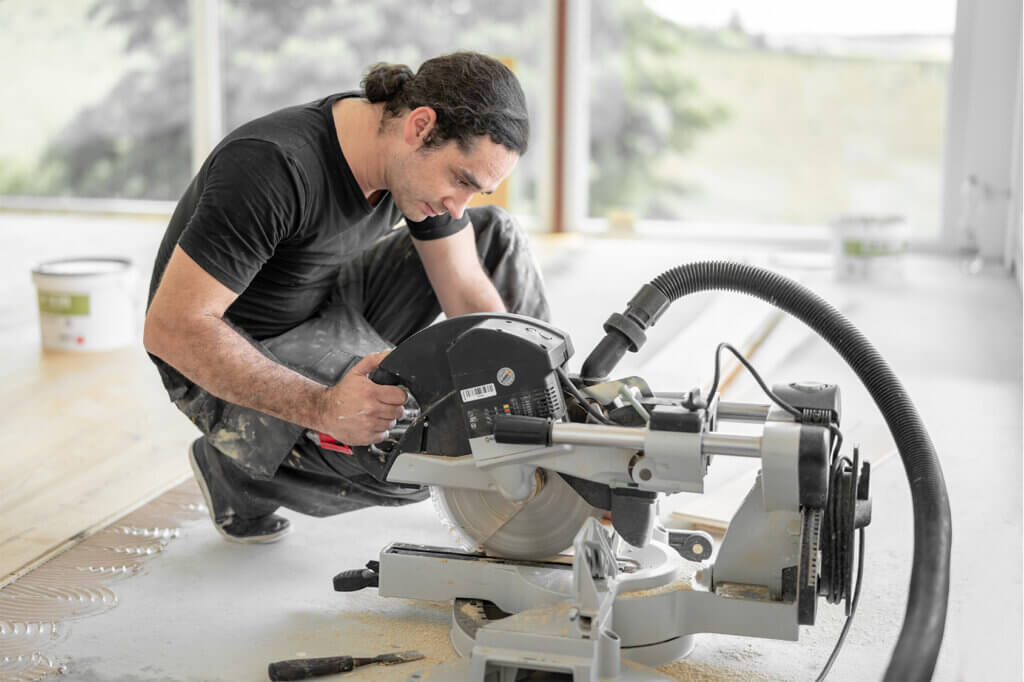
Modern machines are also so comprehensively equipped with safety components that the risk of injury is reduced to a minimum.
For angles and miters
The crosscut saw and the fence can be rotated relative to each other. This allows you to cut the desired pieces at an angle of 0 to 89 degrees. In addition, high-quality chop saws have an additional tilting mechanism. This also allows angular cuts along the thickness. Although the cut is always linear across the width of the clamped material, the cutting angle can be adjusted almost at will. Angle pieces can also be produced in any quantity as well as consistent quality.
The structure of a crosscut saw
Since chop saws are semi-stationary, they are light enough to be carried to the job site by hand. Due to their very heavy base, they nevertheless weigh between 15 and 20 kilograms on average. That is why they are not used as electric hand tools like jigsaws or drills, but as stationary devices. Chop saws allow users to prepare materials for installation, but they cannot be used directly on the installed material.
A crosscut saw consists of the following components:
- Basic frame (consisting of the heavy work foot with attachments)
- Folding mechanism with built-in circular saw
- Clamping device
- Protective devices
Unlike a table saw, the saw unit of a crosscut sawis movable. When the saw unit is folded up, the saw blade is automatically closed by a protective flap. This opens when the saw unit is lowered in proportion to the lowering angle. This largely prevents operators from sawing into their hands. The sawing work takes place only in the last few centimeters when the saw unit is folded down.
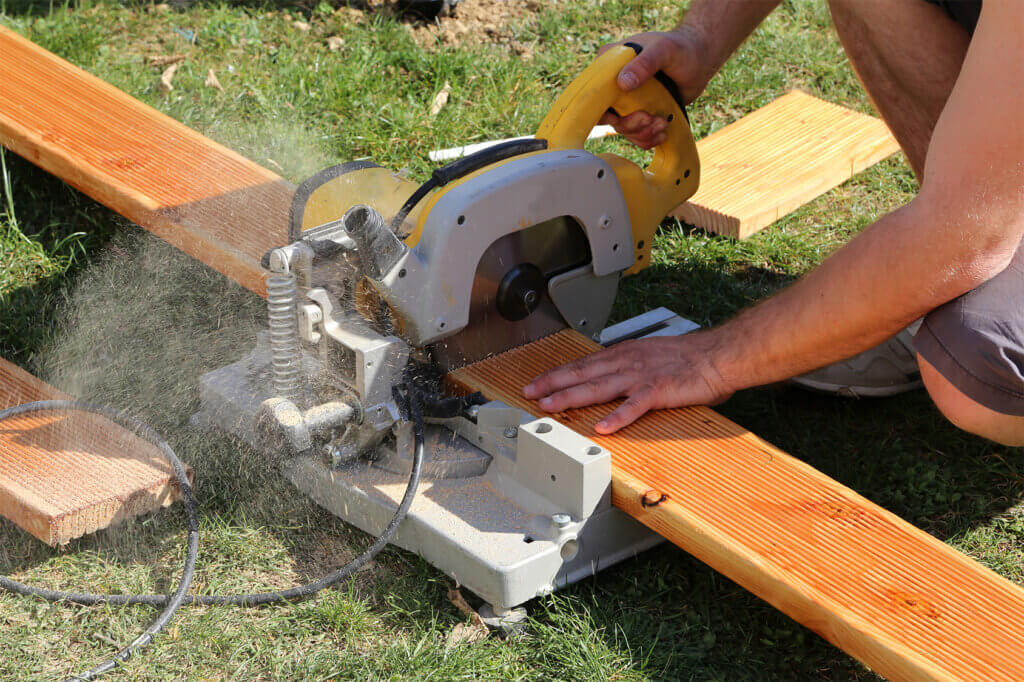
Since this method of operation is somewhat uncomfortable with wide materials, the crosscut saw was developed accordingly. This extension is also known as a chop-pull saw. Here the saw unit is mounted on a rail. When folded down, the chop-pull saw can be moved along the specified line. This makes it possible to machine wide long material, such as boards.
Maximum thickness
The thickness of the material to be processed is always limited by the radius of the circular saw blade. Therefore, for thicker materials, other types of saws, such as band saws, are more suitable.
The versatility in use
A crosscut saw offers a safe and precise way to produce components with consistent dimensions. This makes it an extremely efficient tool in construction operations and especially in interior finishing. Typical applications of a crosscut saw are the following:
- Miter cuts for laths
- Angular sawing of formwork boards
- Precise cutting of PVC pipes
- Soffit cladding
- Making door frames
- Quick sharpening of squared lumber (for use as a drive-in pile, for example)
This is only a small selection of the versatile usability of this tool. On the construction site, challenges are basically constantly found that can only be optimally mastered with a crosscut saw.
Crosscut saws for construction can be used for wood, plastic, pressboard and other soft materials. With the appropriate saw blade it is also possible to cut copper pipes and aluminum profiles. However, for this purpose, the crosscut saw must be of correspondingly high quality. Construction crosscut saws use standard 240 volt house power.
In metalworking, crosscut saws are also used for making miter cuts in profiles and long materials. These units, powered by 400 volts of electricity, are significantly larger, heavier and consequently only available as stationary units.
Working with a crosscut saw
Unlike a table saw or hand-held circular saw, working with a chop saw is very safe. Even though the danger of cutting on the circular saw blade of the crosscut saw is largely eliminated, this work still poses certain dangers. For example, the workpiece can tilt and spring back. Therefore, chop saws equipped with a reliable clamping device are particularly advantageous. If this is missing, we recommend fixing each workpiece with at least one screw clamp.
When working with a chop saw, users should always wear at least eye protection, but ideally full face protection. This prevents splinters or components jumping out from causing injuries to the face. Hearing protection also makes working with a chop saw more comfortable and prevents hearing damage.
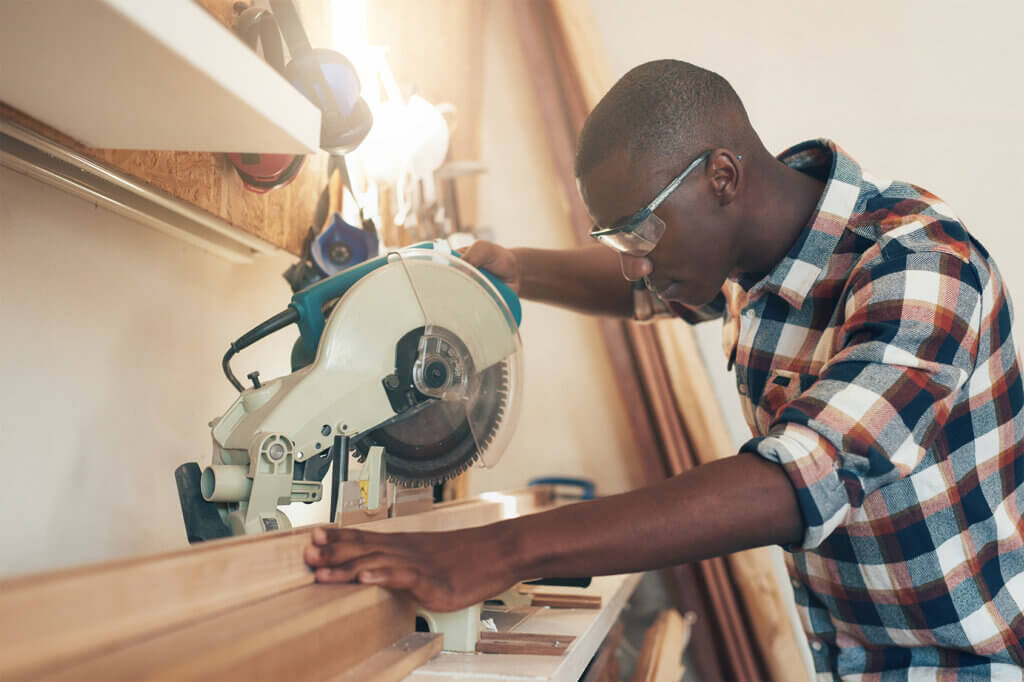
The weak point of any circular saw is the saw blade. If this is blunt, the work becomes not only unpleasant, but also dangerous. A dull saw blade is difficult to guide through a workpiece. It quickly produces abrasion and charring. If the interfaces are shiny, this is already an indication that the sharpness of the saw blade is decreasing. A dull saw blade can even cause the circular saw to kick back when plunging into the workpiece. This poses a risk of injury to the operator and can also damage the device.
Sharpening equipment – a lphnende investment?
The trade offers sharpening devices that can significantly extend the life of the cutting means. However, we recommend that you always keep a sufficient supply of saw blades and have used blades professionally sharpened. This is not only cheaper than running your own, occasionally used device. Professional saw blade sharpeners are also masters of their craft and can restore cutting tools to near-new condition.
The different types and equipment variants
Chop saws are available only in a small variability. Virtually every manufacturer of electric hand tools has at least one line of chop saws in its lineup. These differ in power, size, equipment and comfort features, but today there are major design differences only between normal chop saws and the chop-pull saws.
One notable difference is the size of the saw blade. Conventional crosscut saws can accommodate saw blades up to approximately 260 millimeters in diameter. Rocker sa ws, a very special form of crosscut saw, are available with saw blades up to 700 millimeters in diameter. These special saws are mainly used for the production of firewood.
Size and power
Chop saws are offered in different sizes and power levels. The more users work with the machine and the harder the material to be processed, the stronger the machine should be. We recommend choosing the power of the crosscut saw about one class higher than actually needed. Thus, home and craftsmen always have enough reserves upwards.
Additional functions and comfort features
A rotating work table, a protective hood and a folding mechanism are characteristic of crosscut saws. In addition, these electric tools are equipped with numerous optional additional functions and comfort features:
- Catch bag for sawdust: The catcher bag is already included as standard with inexpensive machines. It is sufficient to safely catch smaller amounts of chips and thus prevent contamination of the surrounding area. The dust is blown out of the inside of the machine by an integrated blower. We recommend that you always work with an exhaust system. This is less cumbersome and guarantees low-dust work.
- Saw head can be tilted on both sides: Saw heads that can be tilted on both sides are important for producing depth angles. This feature is only available on higher-end machines. They are able to cut the board at an angle along its thickness.
- Laser display of the cut: So that users can see exactly where the cut will run along, the crosscut saws have optional lasers built in. These project a line along the saw cut.
- Tool-free change of the saw blade: The tool-free change of the saw blade is a very convenient feature. With its help, the fast processing of different materials is particularly efficient.
- Motor with soft start: A motor with soft start is not only more pleasant to work with. It also protects the home power system and prevents fuses from blowing out all the time.
- LED Cut Line Indicator: An LED cut indicator is very handy for certain applications. Among other things, it helps to adjust the sawing speed precisely to the workpiece.
This is what matters when buying
Crosscut saws are available for DIY use from about 80 to 500 euros. This wide range not only reflects the choice of functions and convenience features. Above all, the quality of workmanship and processed materials is depicted in it. The following points should be checked before buying:
- Overall impression of the machine
- Stability of the device with the saw in the up position
- Game in all guides
- Engine startup
- Clamping options for workpieces
- Mounting options for the machine on workbenches or tables
Quality has its price
Cheap crosscut saws may look the same as high-quality devices from the outside, but the differences become apparent at the latest during the first cut. In high-quality equipment from well-known manufacturers, all guidesare almost without play:
- The saw can be gently guided into the workpiece during lowering.
- Lateral wobbling is ruled out, as is noticeable resistance when pressing down.
- The protective hood retracts cleanly, clearing the way for the saw blade to plunge into the material.
- The clamping device holds the component reliably.
- The scaling of the angles is easy to read.
- The saw maintains the angle once set and does not adjust during work.
- The center of gravity of the machine is in the foot, which gives it a safe and stable stand.
- The motor starts with a slight delay as well as a smooth start-up.
However, these self-evident features are only partially or not at all found in all too cheap machines. Chop saws that give an unclean and wobbly feeling when operated do not inspire confidence in the user. And since this is a working tool with a saw blade that rotates quickly with high torque, a lack of confidence is out of place here.
Chop saws for economy foxes
The good news is: For do-it-yourselfers, there arealso crosscut saws from well-known brands at surprisingly low purchase prices. These are quite sufficient for a home renovation and remodeling project. For all those who like to look for the highest quality on the tool, but can not afford or do not want, we have the following recommendation: Tool rental companies have such equipment on offer as standard. With a high-quality rental machine, you will always achieve more than with a cheap new machine and save money on top of that.
Perfectly tuned
Many brand manufacturers offer precisely matched table frames for their crosscut saws. Their use significantly optimizes the use of this power tool.
The care and maintenance of a chop saw
Chop saws produce large amounts of chips, dust and dirt during operation. Although branded crosscut saws have very good encapsulation, even they are affected by the constant entry of fine dust during prolonged use.
The cleaning
Chop saws ideally clean every day after work. To do this, you will need the following tools:
- Toothpick
- Plastic or root brush
- Clean cloth
- Soap based spray cleaner
- Compressed air
First, use the toothpick to clean any joint on the crosscut saw where sawdust has settled. Then brush the tool with the plastic brush until no more firmly set dust can be seen. Then blow out the crosscut saw with compressed air. It is important that only oil-free and dry compressed air is used. If you do not observe this, damage to the machine is inevitable. Finally, dampen the clean cloth with one or two bursts of spray cleaner. Use this to wipe the outside of the crosscut saw until it is clean. Finally, you can blow the machine again from the outside with compressed air to dry it.
The maintenance
Unless the manufacturer writes otherwise in his operating instructions, no deep maintenance work is to be performed on the crosscut saw. Independent disassembly or replacement of parts is not recommended. For this, professional repairers deliver far better results. The risk of making mistakes when disassembling and reassembling is far too great. This also applies to the lubrication of bearings or the replacement of carbons. It is very important in this work to work strictly according to the manufacturer’s specifications. Incorrect lubricants, unsuitable carbon brushes or other faults can destroy the machine in the worst case.
Image 1: © Anselm / stock.adobe.com | Image 2: © leomalsam / stock.adobe.com | Image 3: © mavoimages / stock.adobe.com

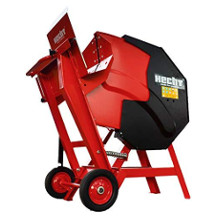
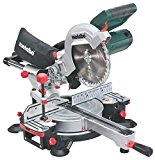
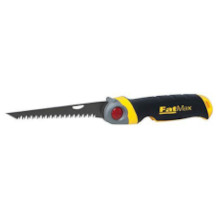
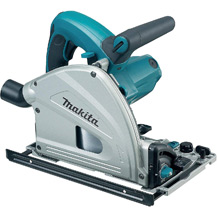
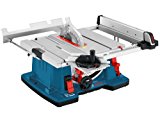
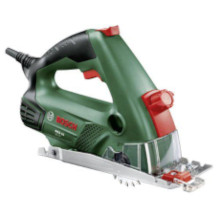










 959 reviews
959 reviews
